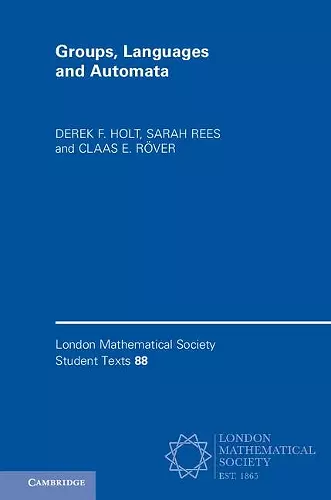Groups, Languages and Automata
Derek F Holt author Sarah Rees author Claas E Röver author
Format:Hardback
Publisher:Cambridge University Press
Published:23rd Feb '17
Should be back in stock very soon
This hardback is available in another edition too:
- Paperback£36.99(9781316606520)

A reference book discussing applications of formal language theory to group theory, particularly geometric and computational group theory.
Many connections exist between group theory and automata theory, and a wide variety of them are discussed in this text. Any necessary background material is provided, and connections are explored along a number of strands that lead to the forefront of current research in geometric group theory.Fascinating connections exist between group theory and automata theory, and a wide variety of them are discussed in this text. Automata can be used in group theory to encode complexity, to represent aspects of underlying geometry on a space on which a group acts, and to provide efficient algorithms for practical computation. There are also many applications in geometric group theory. The authors provide background material in each of these related areas, as well as exploring the connections along a number of strands that lead to the forefront of current research in geometric group theory. Examples studied in detail include hyperbolic groups, Euclidean groups, braid groups, Coxeter groups, Artin groups, and automata groups such as the Grigorchuk group. This book will be a convenient reference point for established mathematicians who need to understand background material for applications, and can serve as a textbook for research students in (geometric) group theory.
'The authors study how automata can be used to determine whether a group has a solvable word problem or not. They give detailed explanations on how automata can be used in group theory to encode complexity, to represent certain aspects of the underlying geometry of a space on which a group acts, its relation to hyperbolic groups … it will convince the reader of the beauty and richness of Group Theory.' Charles Traina, MAA Reviews
'There are copious references and separate indices for notation, subjects, and names of earlier researchers. In summary, this text (written by three experts on the subjects) is a mostly self-contained condensation of hundreds of individual articles. It will serve as a valuable one-stop resource for both researchers and students.' Eric M. Freden, MathSciNet
ISBN: 9781107152359
Dimensions: 235mm x 160mm x 21mm
Weight: 570g
306 pages